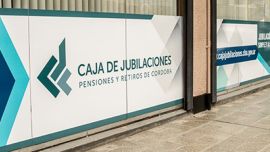Inflation shocks are spreading pain around the world, but nowhere is it as bad as Latin America.
Price surges are busting through policy makers’ targets in all the region’s major economies, with annual inflation prints this month of six percent in Chile, 6.2 percent in Mexico, 10.7 percent in Brazil and a whopping 52 percent in Argentina. Major Wall Street banks are forecasting average cost-of-living increases across Latin America will end the year above 10 percent, the highest globally, and predict pressure on consumer prices will extend well into 2022.
The world’s worst inflation is adding to the pain Latin America has been going through as one of the hardest hit regions during the pandemic. And while fiscal support was unprecedented in many of its countries, in most places it was a fraction of the largesse seen in the United States, Germany or Japan.
Now, as the region emerges from its worst economic crisis in two centuries, Latin Americans are staring down the prospects of low growth and fast inflation. The economic catastrophe has already been a setback for efforts to reduce poverty and also could fuel migration and brain drain – workers stung by the loss in purchasing power might be more likely to head to the United States for better prospects.
Central banks throughout Latin America are embarking on some of the most aggressive rate increases in the world in response, but so far they’ve done little to quell expectations for ever-rising prices. One problem is that the drivers of inflation – things like global shipping bottlenecks and higher commodity costs – are unlikely to be defeated with higher interest rates. But another issue specific to the region is the self-fulfilling prophecy of expectations for things to only get worse, a mindset fuelled by years of swift price increases in decades past.
“Supply shocks are not really something you can fight with monetary policy,” said Andre Loes, the chief economist for Latin America at Morgan Stanley in São Paulo. “Latin America has a longer history than most with inflation and that has a relevant impact on expectations. People do have memory of those years.”
The annual inflation rate in Latin America will reach 10.6 percent this year, according to forecasts by Citigroup Inc., while Morgan Stanley’s estimates for the six biggest economies weighted by growth also put price gains above 10 percent. The median forecasts of economists surveyed by Bloomberg see Latin American inflation averaging 11.9 percent and 10.4 percent this year and next, the world’s fastest price pressure by a long shot.
The effects can be seen everywhere in the region. In Brazil, prices for chicken and eggs were about 29 percent higher in October from a year earlier. In Mexico, cooking gas costs 8.2 percent more than the previous month.
Adriana Cardoso Oliveira, a 53-year-old self-employed baker from Estancia, in Brazil’s northeast, says higher costs for ingredients have crimped profits from the cakes and pastries she sells online. She’s hesitant to raise the prices she charges as fast as her costs are going up, fearful she’ll lose customers. Instead, she’s cutting back on her own spending.
“I used to buy two kilograms of meat a month, and now I only buy one,” she said in an interview. “My budget changed quickly.”
Markets reflect the pessimism as well. Swap rates in Brazil have soared, with traders now pricing in interest rates as high as 12 percent in 2023, which would be the steepest since 2017. Mexico’s two-year breakeven inflation (a forecast of price increases derived from bond yields) hit 5.08 percent in early November, well above the central bank’s three percent target, though it’s since eased off the highs. Debt denominated in local currencies from Latin America’s six largest economies has lost 15 percent this year, according to a Bloomberg index.
One of the most vexing parts of the situation is that interest-rate increases and a surge in prices for commodity exports haven’t bolstered local currencies, which would add inflation-fighting power by reducing the cost of imports. Instead, the currencies of Chile, Colombia and Argentina have fallen at least 10 percent this year, while Mexico’s peso and Brazil’s real have also slumped to lesser extents.
“Higher commodity prices used to mean stronger currencies for Latin America, but that correlation seems to be broken with the pandemic,” said Ernesto Revilla, the chief Latin America economist for Citigroup. “It wasn’t the usual transitory shock we were used to.”
The inflation surge has added pressure on Latin American governments to get a handle on spending and cut budget deficits, just as restive populations throughout the region push for more support.
Chile’s consumer prices jumped to a 12-year high due in part to early pension withdrawals that have fuelled consumption and surging demand for electronics and new cars. In Colombia, the government proposed a tax reform that led to such a severe backlash that the finance minister was forced to resign. Brazil is discussing changes to its spending cap to make room for new cash transfers.
With presidential elections approaching in Brazil and Colombia next year, Revilla said it wouldn’t surprise him to see governments opting for creative ways to control the impact of price gains on their electorate. Brazil, for example, is discussing subsidies for gasoline.
Whatever the fiscal outlook, none of the main economies in Latin America are likely to reach their inflation target this year. Brazil and Mexico, the largest economies, will likely end 2021 with inflation at twice their targets.
“Central bankers are trying to avoid investors believing this will be a supply shock that will result in permanent inflation,” said Mario Castro, a rates strategist at Banco Bilbao Vizcaya Argentaria SA. “And they are crossing their fingers they don’t have to hike too aggressively on the back of this.”
Brazil has hiked borrowing costs 5.75 percentage points since March for the world’s biggest rate increase. Chile only began tightening in July but has now lifted its rate 225 basis points. Colombia has added 75 basis points to its benchmark, and Mexico has added 100 basis points.
The inflation crisis in Latin America is just another factor that will weigh on growth and poverty reduction for years to come, according to economists at Goldman Sachs Group Inc led by Alberto Ramos.
As the social outlook worsened after the pandemic “old foes, low growth and high inflation, are staging a comeback,” they recently wrote.
by María Eloisa Capurro, Bloomberg























Comments